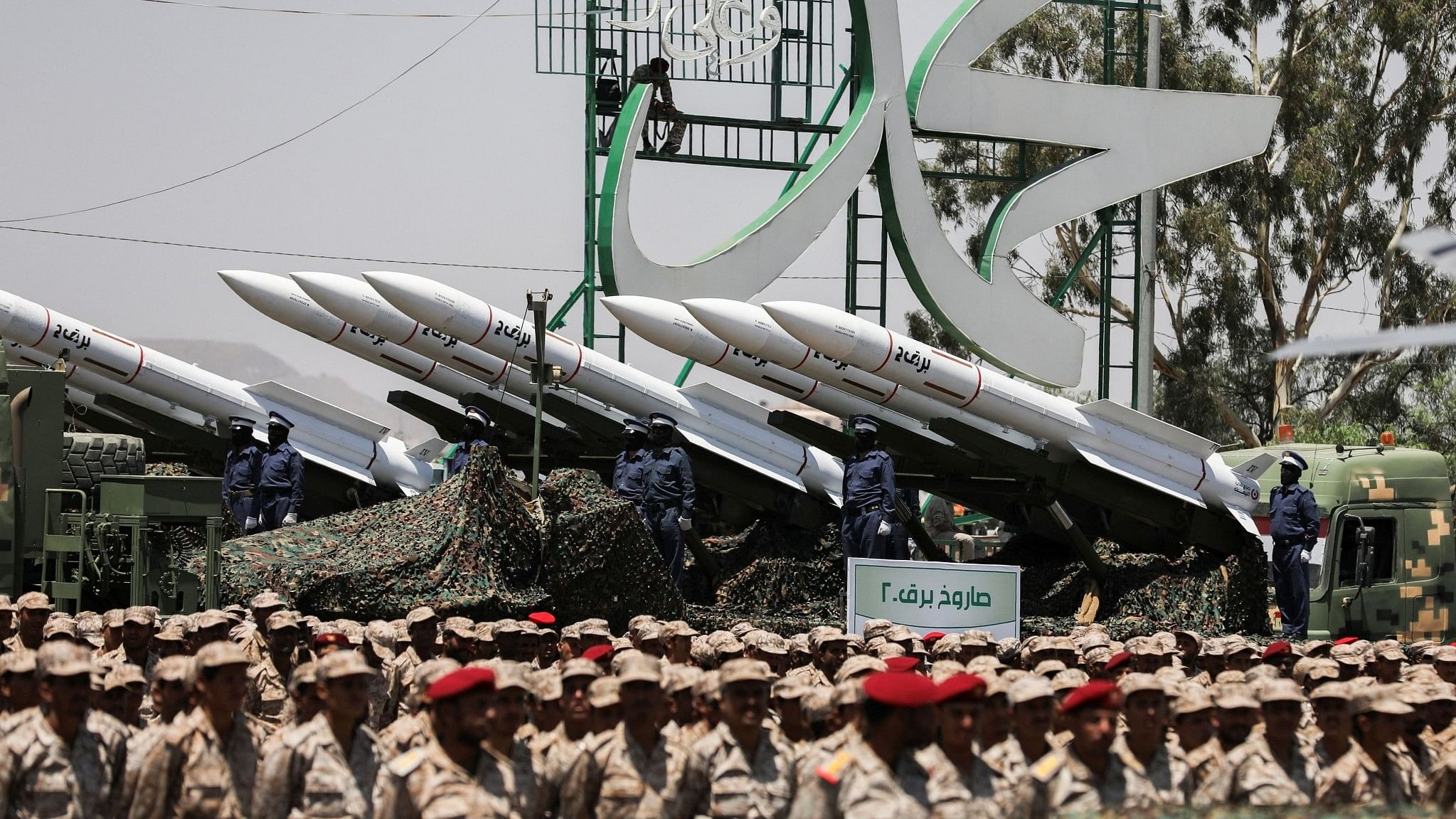
A view of missiles during a military parade held by the Houthis to mark the anniversary of their takeover in Sanaa, Yemen, September 21, 2023.
Credit: Reuters File Photo
In response to the establishment of a multinational force led by the United States to counter Houthi attacks on commercial vessels in the Red Sea, the leader of Yemen's Houthi rebels, Abdel-Malek al-Houthi, issued a warning on Wednesday. The Houthis control significant territory in Yemen and have been carrying out drone and missile attacks on international vessels in the Red Sea since last month, in retaliation to Israel's assault on the Gaza Strip.
The US-led security initiative, named 'Operation Prosperity Guardian', involves patrols by the United States and nine other nations, primarily NATO members, in the Red Sea. Participating countries include Britain, Bahrain, Canada, France, Italy, the Netherlands, Norway, Seychelles, and Spain, among others.
Given this tense context, it becomes crucial to examine the missile stockpiles possessed by the Houthis.
Amid the ongoing civil war in Yemen, where the government, backed by a Saudi-led military coalition, is in conflict with Houthi rebels supported by Iran, the Houthis have strategically utilised a diverse arsenal of ballistic missiles and projectiles acquired from various sources.
A 2020 report titled 'The Missile War in Yemen' by the Center for Strategic and International Studies (CSIS) details some of the rebel group's missile stockpiles and outlines how they were acquired.
File Photo: Armed Houthi rebels rally against Saudi-led air strikes in Sanaa, June 14, 2015.
Credit: Reuters File Photo
Yemeni government stockpiles:
One significant source of Houthi weaponry stems from the Yemeni government's stockpiles, originally acquired from the Soviet Union. The report highlights that Yemen's military possessed a range of missiles, including Scud and OTR-21 Tochka missiles, dating back to the 1970s. The Houthi movement capitalised on the political turmoil within Yemen, exploiting the weak control over these weapons as factions shifted allegiance. According to UN experts, Houthi forces possibly gained control of nearly 70 per cent of the Yemeni military's weapons cache, especially after the political transition from President Muhammad Saleh to Abdrabbuh Mansur Hadi in 2012.
Missiles are displayed during a military parade held by the Houthis to mark the anniversary of their takeover in Sanaa, Yemen September 21, 2023.
Credit: Reuters Photo
Battlefield capture:
The Houthi forces have also acquired weaponry through battlefield captures, including rockets. The report cites instances where Houthi troops captured rocket launchers and other equipment from Saudi forces as well as other local militias. An instance cited in the report reads, "In April 2015, for example, Houthi fighters seized RPG-26 variants accidentally airdropped by the coalition into Houthi-controlled territory. A Houthi leader took a picture of the shipment holding a thank-you note addressed to King Salman".
An RPG-26 variant mistakenly dropped by the Saudi-led coalition, and acquired by the Houthis.
Credit: 'The Missile War in Yemen' (CSIS, 2020)/UN
Iranian support:
Iran serves as a crucial source of advanced missile technology for the Houthis, with evidence pointing towards missile debris, naval interdictions, and seized equipment bearing Iranian manufacturing labels. The report identifies various missile types, including the Burkan series ballistic missiles, the Quds-1 cruise missile, the al-Mandab-1 anti-ship missile, and the Sayyad-2C surface-to-air missile, all exhibiting Iranian design and manufacturing characteristics. Iranian support for the Houthis serves as a cost-effective means for Iran to challenge regional rivals, notably Saudi Arabia, and project power across the Middle East.
File Photo: Iranian-made anti-tank missiles on display at Joint Base Anacostia-Boling in Washington, DC, January 24, 2018. The missiles were fired by Houthi rebels in Yemen.
Credit: US Department of Defense
Drones and evolution of conflict:
The CSIS report highlights a shift in Houthi tactics towards greater use of drones, which are more transportable and easily assembled locally than ballistic missiles. The report notes that the Houthi forces are increasingly relying on the import of high-value components for locally assembling extended-range unmanned aerial vehicles (UAVs). This shift adds a layer of complexity to the conflict, characterised by a mix of drone and missile attacks.
